![Handbuch der Pflanzenanatomie Band 7, Teil 3: Comparative Anatomy of Vegetative Organs of the Pteridophytes [English] Handbuch der Pflanzenanatomie Band 7, Teil 3: Comparative Anatomy of Vegetative Organs of the Pteridophytes [English]]()
Click to have a closer look
About this book
Contents
Customer reviews
Related titles
About this book
Language: English
The Pteridophytes include the highly differentiated vascular cryptogams, living on land. They show a distinct alternation of generations in their life cycle. The gametophyte or the prothallium consists of flat, filiform or tuberous thallus of some millimeters, while the sporophyte is a large body provided with vegetative organs: the stems, leaves and roots, and also the differentiated tissues, represented by various kinds of vascular bundles.
Handbuch der Pflanzenanatomie Band 7, Teil 3: Comparative Anatomy of Vegetative Organs of the Pteridophytes is the revised edition of Vergleichende Anatomie der Vegetationsorgane der Pteridophyten, published in 1938.
Since the former edition, more than thirty years have passed, and during that period numerous investigations into the anatomy of the Pteridophytes have been carried out; their results are cited widely in this edition.
The object of Handbuch der Pflanzenanatomie Band 7, Teil 3: Comparative Anatomy of Vegetative Organs of the Pteridophytes is to give an exact description of the anatomical structure of the vegetative organs of the sporophytes, that is, of the kinds of tissues and their arrangement in each organ, as well as the comparison of tissues in different kinds of plants; from the comparative, systematic and phylogenetic points of view. The fossil material is found as impressions generally and rather rarely in petrified condition. In the latter case, often the original cellular structures are well preserved. The fossil Pteridophytes often widely differ from the living ones and may play an important role in the explanation of the phylogenetic development of the tissues of living species, so that the anatomical structure of fossils is given here on as a large scale as possible.
Of interest to every botanist, specialists in forestry, geographers, relevant research institutes, paleobotanists, institutes for applied botany, institutes for wood research, agricultural colleges, science libraries.
Contents
Preface to the Second Edition V
Vorwort zur ersten Auflage VI
Introduction 1
Historical 1
Literature 6
1 General Description 8
11 The Stem 8
111 The Epidermis 11
112 The Cortex and the Pith 16
113 The Stele 26
The Vascular Bundle 26 - The Endodermis 42 - The Type of the Stele and
the Stelar Theory 44
114 The Cone Axis 81
115 The Growing Point and the Meristem 82
12 The Leaf 86
121 The Petiole and the Rachis of the Filicopsida 89
The Epidermis 89 - The Cortex and the Pith 92 - The Stele 93
122 The Lamina 119
The Epidermis 119-The Mesophyll 127-TheNerve 129-The Ligule 130
123 The Sporophyll 130
124 The Growing Point 131
13 The Root 132
131 The Epidermis and the Rootcap 135
132 The Cortex 136
133 The Stele 138
134 The Growing Point and the Meristem 140
2 Special Description 144
21 Class Psilophytopsida 145
211 Order Psilophyrales 145
22 Class Psilotopsida 149
221 Order Psilotales 150
Family Psilotaceae 150
23 Class Lepidopsida 153
231 Order Protolepidodendrales 155
232 Order Lepidodendrales 155
233 Order Lepidocarpales 178
234 Order Isoetales 181
Family Pleuromeiaceae 181 - Family Isoetaceae 182
235 Order Selaginellales 191
Family Selaginellaceae 192
236 Order Lycopodiales 202
Family Lycopodiaceae 202
24 Class Arthropsida 212
241 Order Protoarticulales 213
242 Order Sphenophyllales 215
Family Sphenophyllaceae 215
243 Order Cheirostrobales 223
Family Cheirostrobaceae 224
244 Order Pseudoborniales 225
Family Pseudoborniaceae 225
245 Order Calamariales 225
Family Calamariaceae 225
246 Order Equisetales 239
Family Equisetaceae 239
25 Class Filicopsida 250
25a Subclass Primofilicidae 251
251 Order Protopteridales 251
252 Order Cladoxylales 253
253 Order Coenopteridales 262
254 Order Archaeopteridales 281
25b Subclass Filicidae 284
255 Order Eusporangiales 284
Family Ophioglossaceae 285 - Family Marattiaceae 294 - Family Psaroniaceae 303
256 Order Noeggerathiales 312
Family Noeggerathiaceae 312
257 Order Protoleptosporangiales 313
Family Osmundaceae 313
258 Order Leptosporangiales 325
Family Schizaeaceae 326 - Family Gleicheniaceae 332 - Family
Loxsomaceae 339 - Family Hymenophyllaceae 341 - Family Pteridaceae 347
Family Parkeriaceae 357 - Family Hymenophyllopsaceae 360 - Family
Davalliaceae 361 - Family Plagiogyriaceae 364 - Family Cyatheaceae 366
- Family Aspidiaceae 376 - Family Blechnaceae 379 - Family Asple-
niaceae 382 - Family Matoniaceae 384 - Family Polypodiaceae 387 -
Family Vittariaceae 393 259 Order Hydropteridales 395
Family Marsileaceae 395 - Family Salviniaceae 400
2510 Appendix. Fossil Filicidae of uncertain systematic position 403
Tempskya 404 - Stems with solenostelic or dictyostelic forms 404 - Shoot
with polycyclic meristeles 405
Bibliography 408
Author Index 470
Index of Plant Names 476
Subject Index 495
Customer Reviews






![Handbuch der Pflanzenanatomie Band 7, Teil 3: Comparative Anatomy of Vegetative Organs of the Pteridophytes [English] Handbuch der Pflanzenanatomie Band 7, Teil 3: Comparative Anatomy of Vegetative Organs of the Pteridophytes [English]](http://mediacdn.nhbs.com/jackets/jackets_resizer_xlarge/34/34738.jpg?height=620)
![Handbuch der Pflanzenanatomie Band 7, Teil 3: Comparative Anatomy of Vegetative Organs of the Pteridophytes [English]](http://mediacdn.nhbs.com/jackets/jackets_resizer/34/34738.jpg)







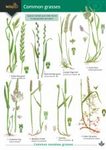


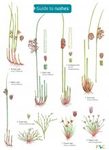
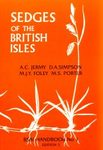
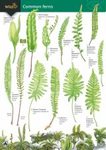

![Start to Identify Grasses [enlarged edition]](http://mediacdn.nhbs.com/jackets/jackets_resizer_medium/24/249274.jpg?height=150&width=112)
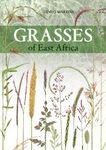




![Bibliotheca Diatomologica, Volume 15: Bacillariaceae, Epithemiaceae, Surirellaceae [German]](http://mediacdn.nhbs.com/jackets/jackets_resizer_medium/62/62828.jpg?height=150&width=93)
![Bibliotheca Diatomologica, Volume 38: Insel der Endemiten: Geobotanisches Phänomen Neukaledonien [Island of Endemics: New Caledonia – A Geobotanical Phenomenon]](http://mediacdn.nhbs.com/jackets/jackets_resizer_medium/94/94205.jpg?height=150&width=96)





